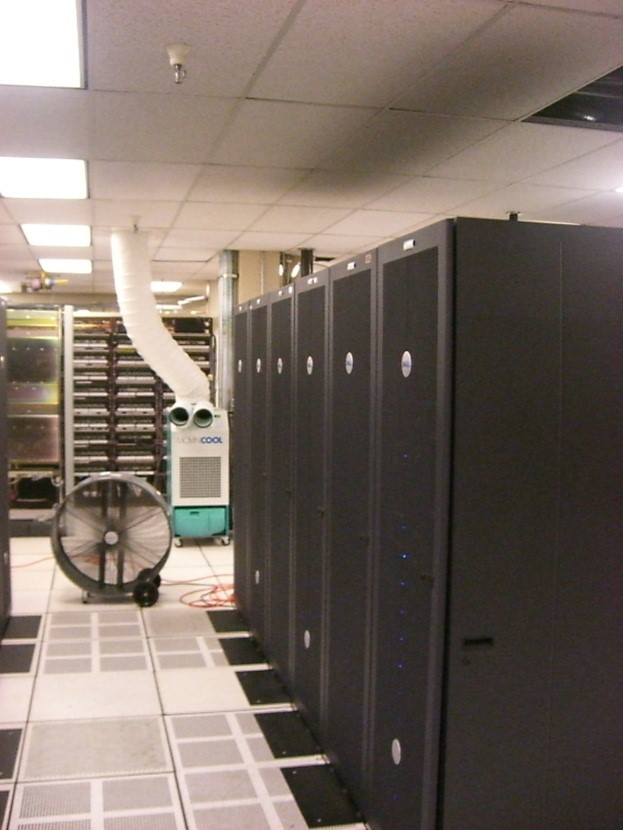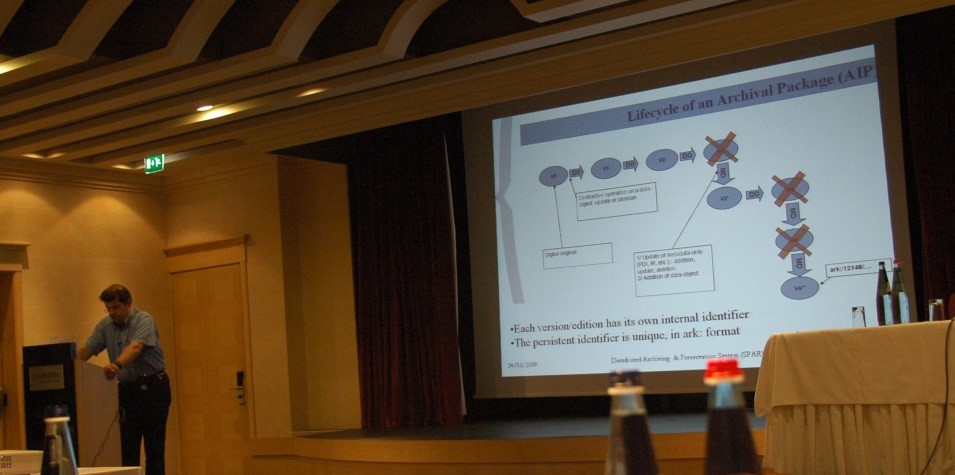Thomas Ledoux is Co-ordinator of Digital Production at the National Library of France
Digital preservation, seen from the outside, may appear as a very technical topic where you only talk about formats, storage, infrastructure and the like.
Indeed, in order to appraise, audit or ingest digital material, a certain degree of technical expertise is needed. But when you follow these steps, it becomes clear that the first requirement is collaborating and building up communities, because what you build should last.
Of course, the first community you need to build is inside your organization: aggregate an internal team. This means you need to define your own goals and start to share a common vocabulary (here is where tools like OAIS or METS can be helpful). A better understanding about the collections and the kind of media you have to deal with is essential. At the same time, you need to pool the means (especially storage infrastructure) so that what you build is sustainable.
But soon, it appears that your own organization is too small to be able to encompass and solve all the threats of digital preservation. In order to cope with the variety of materials that is been produced digitally, help from everywhere is needed. You must think at a national, continental or even better international level.
To illustrate all these thoughts, I would like to tell you part of the history of PASIG, the Preservation and Archiving Special Interest Group that tries to disseminate knowledge and howtos on digital preservation.
The adventure of PASIG begins in 2007 when Sun and Stanford University assess that a group of people was needed in order to share their experiences. It happens that BnF (the National Library of France) was also present because we were looking for storage solutions as well. The time was optimal because many university libraries were preparing themselves to receive a huge amount of data coming mostly from the Google book projects while BnF was launching its own mass digitization program.

Figure 1: Computer room cooling system back in 2007
So the first PASIG conference was held in Stanford where we had the opportunity to confront our first drafts of blueprints. Not mentioning the inevitable OAIS diagrams, I especially remember when we, the National Library of New Zealand and BnF, were comparing our use cases and finding so many similarities even though we have two different implementation views: one will lead to the development of Rosetta from ExLibris while we were preparing for the advent of our own SPAR (Scalable Preservation and Archiving Repository.
The next time, Sun organized the PASIG in Paris where, despite the transport strike, the conference was a great success in sharing requirements between different institutions (Stanford of course, Oxford and the California Digital Library, to name a few).

Figure 2: Sharing requirements
The following three events were an opportunity to discuss storage technologies: experimenting with the now gone Honeycomb which allows one to explore object storage as well as storlets (pieces of code that could execute directly at the storage layer on the data); but also listing the needs in tape technology (which in a way has led to the implementation of the Data Integration Validation feature).
In the momentum, the cross-pollination made by the following conferences going from America to Europe and the other way around has been building strong collaborations and was a huge vector in raising the awareness of the subject among the community. Hearing the advances of each system, knowing what the Open Source projects were able to provide and seeing how the commercial offers were progressing, all in one place, was invaluable to understand what obstacles were been overcome, what new opportunities were allowed and what challenges had to be explore.
From my personal perspective, it was a chance to inform others on what we were doing and to observe how this was received and understood in order to avoid stupid mistakes or oversights.
At the same time, being able to see real problems and real implementations (with their pros and cons) was a huge help in thinking about what we should care about.
PASIG is today a mature organization operating in the field from an independent and neutral position. From the early adopters group, it has now defined a governance with its permanent steering committee and the nomination of a program committee from conference to conference
So please, don't be shy: share your dreams but also your nightmares. You shouldn't be "Alone in the dark": migrate, emulate or share your new way of preserving digital material!!!
